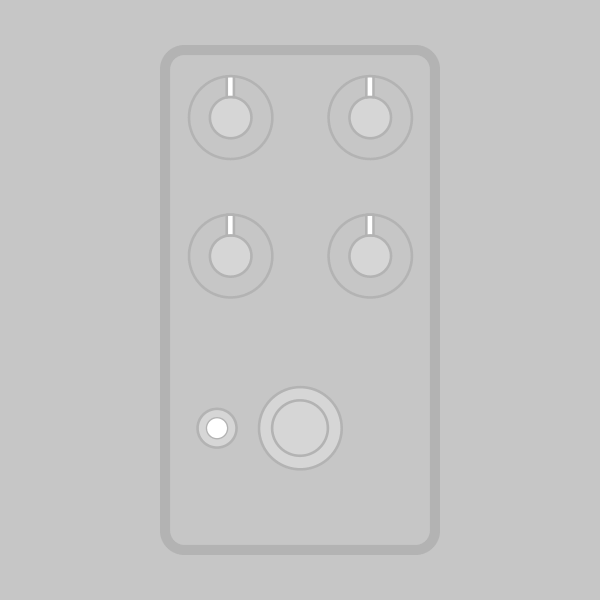
The Proteus Germanium Fuzz is an adaptation of the classic Dallas-Arbiter Fuzz Face circuit released in 1966. The Fuzz Face was copied directly from the Tone Bender Mk. 1.5 that was released earlier in the year, but its association with Jimi Hendrix led to its own fame and prominence, and today it’s the better-known circuit of the two.
The Proteus is similar to the Solaris, another Aion FX project based on the Fuzz Face, but the Proteus is more basic while the Solaris is has several added modifications. If you just want to build a basic Fuzz Face with no frills then this is the one you want.
With that said, there are still two modifications to the circuit. The first is a charge pump allowing -9V operation from a normal +9V supply, which allows it to play nice with other pedals and standard power supplies. (Unlike most effects that came after, germanium PNP transistors require a negative supply.)
The second modification is a switchable pickup simulator at the input. The Fuzz Face was originally designed to connect directly to an electric guitar, and as a result it is notoriously picky about where it’s placed in the signal chain. If it’s fed a low-impedance signal (e.g. if there’s another pedal before it) then it loses much of its character.
The pickup simulator solves this problem by adding a transformer, resistor and capacitor to convert the source signal into the higher impedance that the Fuzz Face likes. This pickup simulator was invented by Jack Orman of AMZ and has been used in commercial pedals such as the Earthquaker Devices Erupter.
The pickup simulator won’t provide the same interactivity with the guitar’s tone & volume as if it was connected directly, but it will help retain the tonal character. When turned off, the pickup simulator is fully bypassed and out of the circuit, so you should only enable it if you want to place the Proteus in a position other than first in your signal chain.